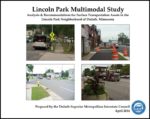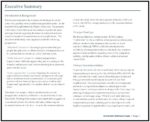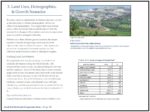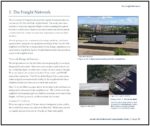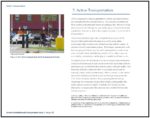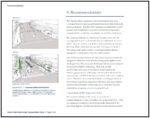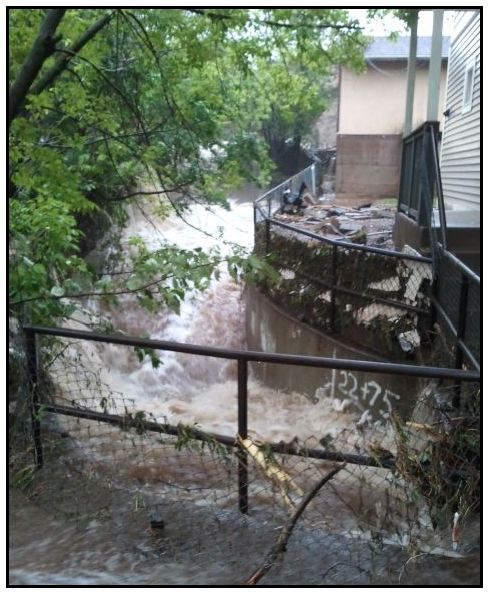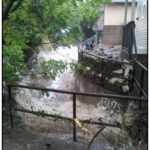This past week, after our first snowfall of the season, it’s been easy to spot the routes that people take when they travel on foot. 
Previously-invisible pedestrian pathways are revealed as the snow is packed down underfoot. Some are traversed only lightly while others are obviously heavily used. Some are tough going while others are (comparatively) easy to negotiate on foot.
The Lincoln Park Pedestrian Plan, one of our recent planning efforts, was dedicated to discovering that same information — what routes people (especially school-aged children) take as they make their way through the neighborhood and how “walkable” those pathways are.
During a walkability audit in the summer of 2011, an overgrown segment of Devonshire Street was identified as a significant barrier between the new Lincoln Park Middle School and the adjacent neighborhood. (Check out the “before” picture, below, which shows James Gittemeier, a Senior Planner with the MIC, pointing out where a new trail could be built).
Community Trail Project
Two weeks ago (aided by a fortunate fair-weather interlude), students and community members worked to bridge that gap by building a new trail connection to the school. By clearing brush, digging up roots and rocks and placing gravel, they created a footpath that links the existing sidewalks along Devonshire Street.
The result is a direct route between the school and the eastern section of the adjacent neighborhood as well as a pathway with a more gradual slope in a neighborhood perched on one of Duluth’s steepest hillsides. (In the “after” picture, at top of the page, you can see how there’s now a trail there, and that it’s being used even in the winter).
Community Planning Partners
The finished project may look like a simple little trail, but it’s a great example of how the MIC can leverage the resources and missions of mul tiple community partners to achieve mutual goals.
tiple community partners to achieve mutual goals.
The MIC, as the MPO for Duluth and Superior, has a primary, long-term goal of developing a safe, integrated, multimodal transportation network for this region.
Project partners in this effort, the Healthy Duluth Area Coalition, the St. Louis County Public Health and Human Services Statewide Health Improvement Program (SHIP) have a primary, long-term goal of encouraging active lifestyles for our kids.
The City of Duluth, through its Comprehensive Plan and Parks and Trails initiatives, has a primary, long-term goal of strengthening neighborhoods by creating and maintaining connectivity through its sidewalks, bikeways and trails.
Safe Routes to School Planning
The Devonshire trail was a small, manageable project that began with conversations the MIC has had within the neighborhood and accomplished with the help of community volunteers of all ages.
We are now undertaking a new planning Safe Routes to School initiative to build on this work and this neighborhood enthusiasm.
Stay tuned for more information as we work to involve the community in what we hope will be another successful “before” and “after” planning effort.
